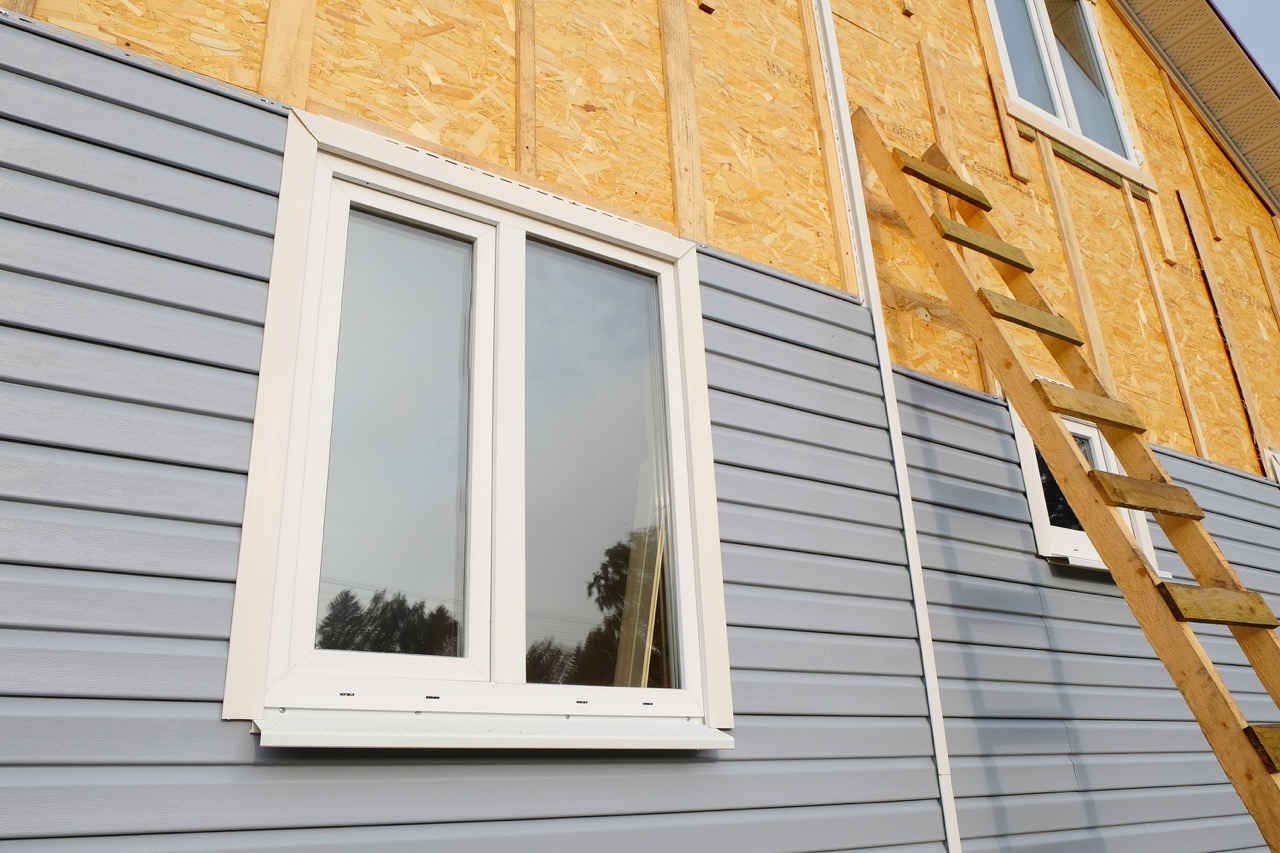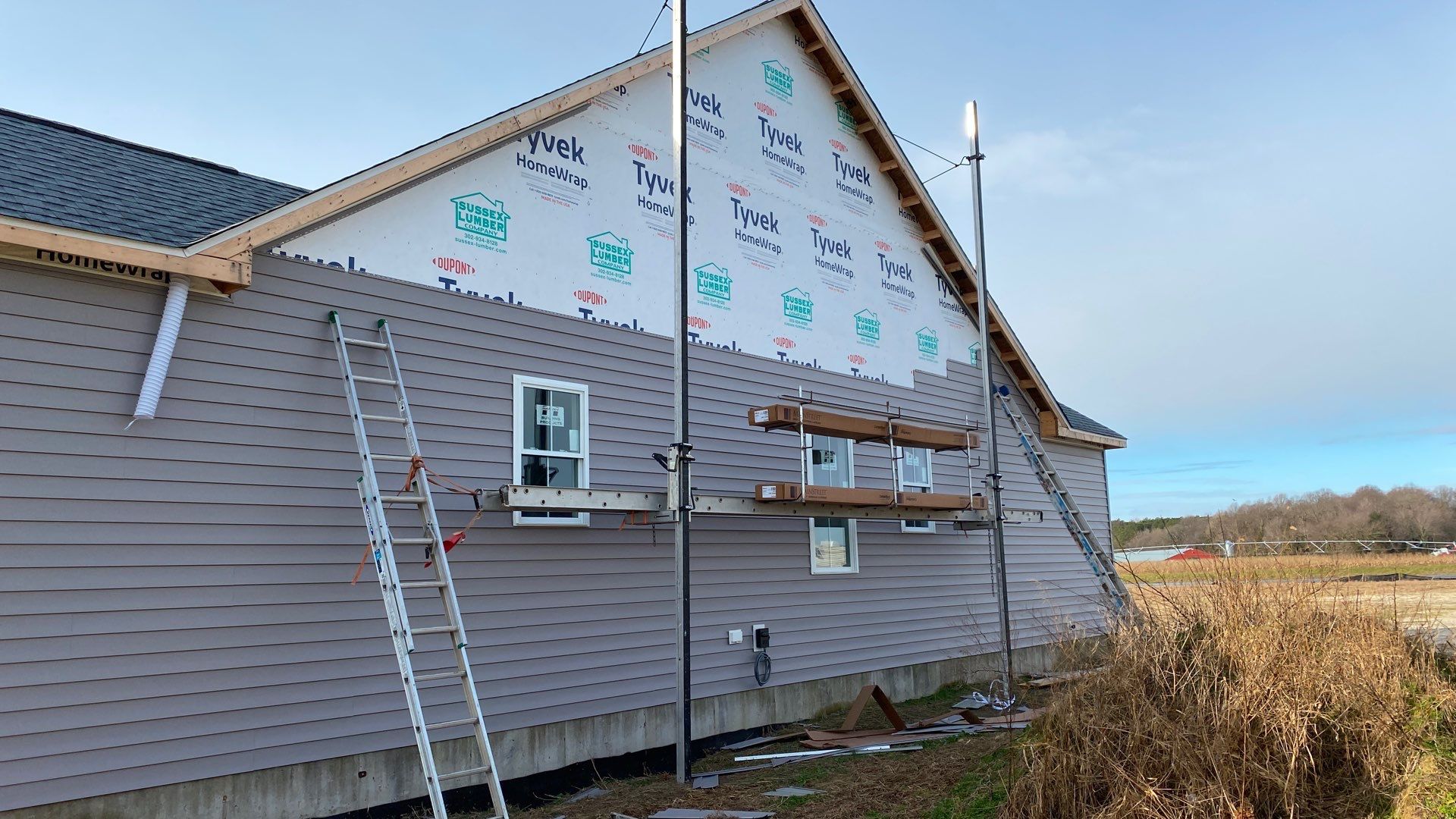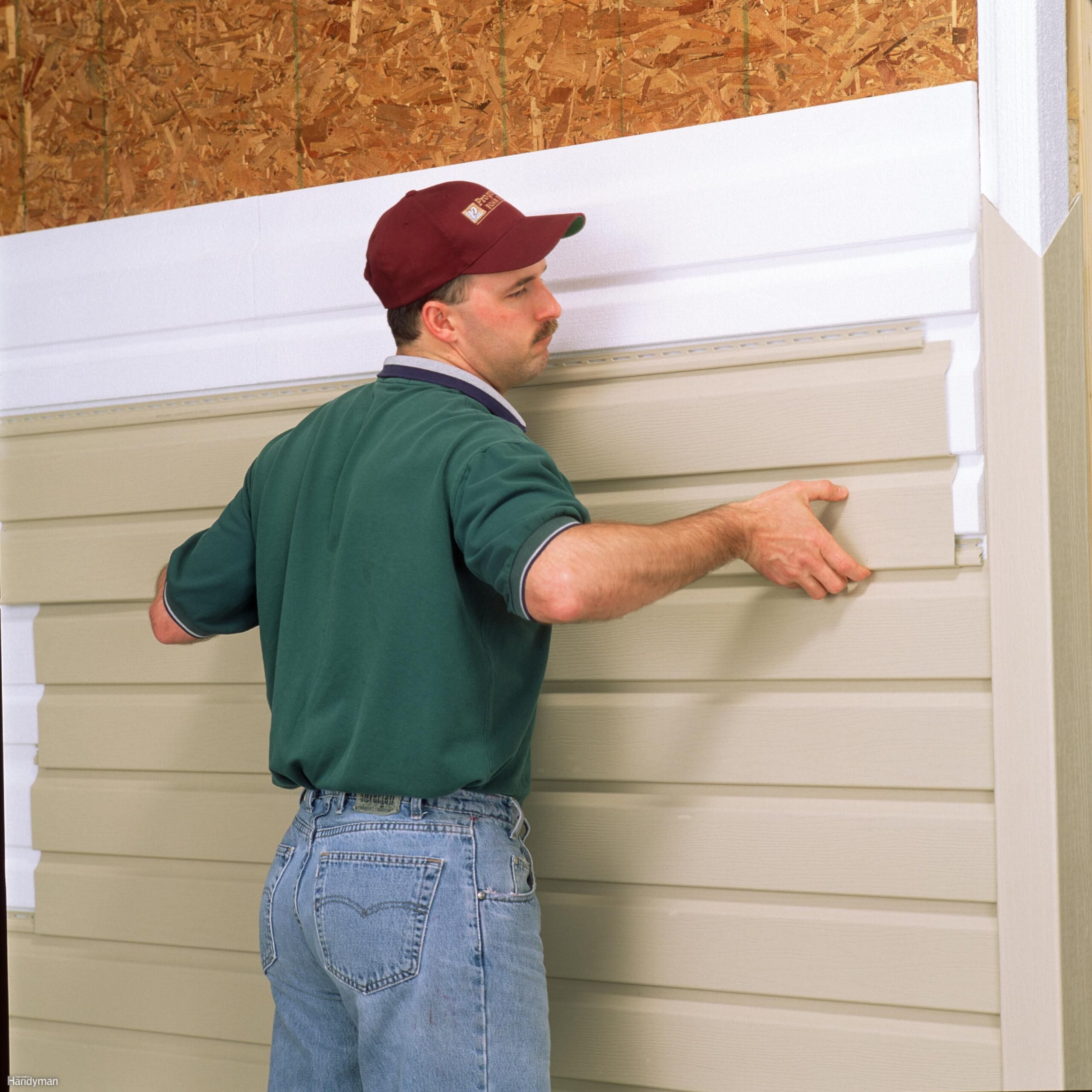How to Maintain Insulated Siding
How to maintain insulated siding is more than just a chore; it’s an investment in your home’s longevity and curb appeal. This guide dives into the specifics of caring for different siding materials, from the routine cleaning and inspection to addressing common issues and planning for long-term maintenance. We’ll cover everything from choosing the right cleaning solutions to identifying and fixing minor damage, ensuring your siding stays beautiful and protects your home for years to come.
Understanding your siding material is key. Vinyl, fiber cement, and foam all have unique properties and maintenance needs. We’ll explore these differences, providing a clear comparison to help you understand the best practices for your specific siding. Regular inspection is crucial for catching problems early, preventing costly repairs down the line. This guide will equip you with the knowledge and steps to keep your insulated siding looking its best and performing optimally.
Understanding Insulated Siding Materials
Choosing the right insulated siding is a crucial decision impacting your home’s energy efficiency, curb appeal, and longevity. Understanding the properties of different materials is key to making an informed choice. This section will delve into the specifics of common insulated siding materials, comparing their durability, maintenance needs, and how they fare in various climates.
Insulated Siding Material Properties
Insulated siding combines an outer protective layer with an inner insulating core. Common outer layers include vinyl, fiber cement, and engineered wood. The insulating core is typically made of foam, such as polyisocyanurate (polyiso), expanded polystyrene (EPS), or extruded polystyrene (XPS). Each combination offers a unique set of advantages and disadvantages.
Vinyl Insulated Siding
Vinyl siding, often the most affordable option, consists of a durable vinyl outer layer and a foam core. It’s lightweight, easy to install, and comes in a wide array of colors and styles. However, it can be prone to damage from impacts and extreme temperature fluctuations, potentially leading to cracking or warping. Its lifespan typically ranges from 20 to 40 years, depending on quality and environmental factors. Regular cleaning with soap and water is usually sufficient for maintenance.
Fiber Cement Insulated Siding
Fiber cement siding offers superior durability compared to vinyl. Made from a composite of cement, cellulose fibers, and other additives, it’s resistant to fire, insects, and moisture. Its thicker construction provides better insulation than vinyl, leading to potential energy savings. However, it’s heavier and more expensive than vinyl, and requires more care during installation. While less prone to damage, fiber cement can chip or crack if mishandled. Regular cleaning and occasional repainting (every 5-10 years depending on climate) are necessary for maintaining its appearance.
Foam Insulated Siding
Foam-based siding, often using polyiso or XPS foam, provides excellent insulation but typically requires a separate exterior finish layer, such as vinyl or fiber cement, for protection from the elements. This adds to the cost and complexity of installation. The foam core is extremely lightweight, reducing installation time and effort, and provides superior thermal performance. The lifespan of the foam core is very long, but the outer finish layer’s durability depends on the material chosen. Maintenance depends largely on the outer layer.
Comparison of Insulated Siding Materials
| Material | Pros | Cons | Maintenance |
|---|---|---|---|
| Vinyl | Affordable, lightweight, easy installation, wide variety of colors | Susceptible to impact damage, can warp in extreme temperatures | Regular cleaning |
| Fiber Cement | Durable, fire-resistant, insect-resistant, good insulation | Expensive, heavy, can chip or crack | Regular cleaning, periodic repainting |
| Foam (with outer layer) | Excellent insulation, lightweight, long lifespan (core) | Requires additional outer layer, potentially more expensive installation | Maintenance depends on outer layer material |
Climate and Weather Conditions
Extreme temperature swings, heavy rainfall, and intense sunlight can significantly impact the lifespan of any siding material. For instance, vinyl siding in regions with harsh winters may be more prone to cracking due to contraction and expansion. Fiber cement siding, while durable, may require more frequent repainting in areas with intense UV exposure. In coastal areas, salt spray can accelerate the deterioration of many siding materials. Therefore, selecting siding appropriate for your specific climate is crucial for maximizing its lifespan and minimizing maintenance needs. For example, a home in a desert climate might benefit from lighter-colored siding to reflect sunlight and reduce heat absorption, while a home in a humid climate might benefit from a material resistant to moisture damage.
Addressing Common Issues
Insulated siding, while durable, isn’t immune to problems. Understanding common issues and how to address them is crucial for maintaining its longevity and aesthetic appeal. Ignoring minor problems can lead to more extensive and costly repairs down the line. This section covers common issues, their causes, and effective solutions.
Water Damage
Water intrusion is a significant concern with any exterior cladding, and insulated siding is no exception. Problems arise from compromised seals around windows and doors, damaged or improperly installed flashing, and cracks or holes in the siding itself. Water can lead to rot, mold growth, and structural damage. Preventing water damage requires regular inspection of all seams and connections, ensuring proper caulking and flashing are in place, and promptly addressing any leaks. If water damage does occur, the affected area needs immediate attention to prevent further spread. This may involve removing and replacing damaged siding panels and addressing any underlying moisture problems.
Insect Infestation
Certain insects, like carpenter ants and termites, can burrow into insulated siding, particularly if there’s existing wood damage or moisture issues. These infestations weaken the siding and can cause structural problems. Regular inspection is vital, paying close attention to areas around windows, doors, and the foundation. Early detection is key. If an infestation is discovered, professional pest control is usually necessary to eliminate the insects and repair any damage they’ve caused.
Caulking Failure
Caulk acts as a sealant, preventing water from penetrating the seams and joints of the siding. Over time, caulking can crack, shrink, or become brittle, losing its effectiveness. This is particularly noticeable around windows, doors, and corners. Regular inspection and recaulking as needed are essential preventative measures. Replacing failed caulking involves removing the old, deteriorated material and applying fresh, high-quality caulk, ensuring a smooth, even bead.
Repairing Minor Damage
Minor dents or small holes in insulated siding can often be repaired without replacing entire panels. For dents, gentle manipulation using a putty knife or similar tool may suffice. Small holes can be filled with a suitable patching compound designed for exterior use, ensuring a smooth finish after drying and painting to match the existing siding color.
Replacing Damaged Siding Panels
Replacing damaged panels requires more effort. The process typically involves removing the damaged panel carefully, taking note of its size and position. The underlying structure should be inspected for any damage. A replacement panel of the same type and color is then installed, ensuring proper alignment and secure fastening. Finally, the seams are sealed with high-quality caulk to prevent water intrusion.
Troubleshooting Siding Problems Flowchart
Imagine a flowchart here. It would start with a box labeled “Siding Problem Detected?”. A “Yes” branch would lead to boxes representing common problems like water damage, insect infestation, etc. Each problem box would then branch to solutions, such as “Inspect for leaks,” “Call pest control,” or “Replace damaged panels.” A “No” branch would lead to a box labeled “Continue Regular Maintenance.” The flowchart would visually guide users through troubleshooting common siding issues systematically.
Caulking and Sealing
Proper caulking and sealing are crucial for maintaining the integrity and energy efficiency of your insulated siding. These seemingly small details play a significant role in preventing water damage, air leaks, and the degradation of your siding’s overall performance. Neglecting this aspect can lead to costly repairs down the line.
Caulk acts as a barrier against the elements, preventing moisture from seeping into the gaps around windows, doors, and other openings in your siding. This prevents water damage to the underlying structure and helps maintain the insulating properties of the siding itself. Furthermore, a well-sealed exterior minimizes drafts, leading to improved energy efficiency and lower heating and cooling bills. Regular inspection and maintenance of caulking are therefore essential for long-term siding health.
Caulk Selection and Application
Choosing the right type of caulk is vital for effective sealing. Different caulks offer varying levels of flexibility, durability, and weather resistance. Silicone caulk, for example, is highly durable and water-resistant, making it ideal for areas exposed to significant moisture. Acrylic latex caulk is more flexible and paintable, suitable for less demanding applications. Butyryl caulk offers a balance between flexibility and durability. Before applying any caulk, ensure the surface is clean, dry, and free from loose debris. This ensures proper adhesion.
Caulking Techniques
A visual guide to proper caulking involves several steps. First, apply a bead of caulk along the joint, ensuring complete coverage. Imagine a continuous, smooth line filling the gap completely. The bead should be slightly wider than the gap to allow for shrinkage. Next, use a caulking tool – a simple, wet finger works well – to smooth the bead into a neat, consistent shape. This ensures a professional finish and helps prevent cracking. Finally, allow the caulk to cure completely according to the manufacturer’s instructions before painting or further finishing. This curing process ensures proper adhesion and longevity.
Maintaining Caulk
Regular inspection is key to maintaining effective caulking. Check all caulked areas at least annually, particularly after harsh weather conditions. Look for cracks, gaps, or signs of deterioration. If any damage is found, carefully remove the old caulk using a utility knife or other appropriate tool. Clean the area thoroughly, ensuring a clean surface for proper adhesion. Then, apply new caulk following the same techniques described previously. Prompt attention to damaged caulking prevents larger problems from developing.
Preventing Future Damage
Proactive maintenance is key to extending the lifespan of your insulated siding and preventing costly repairs. By taking steps to protect your siding from the elements and potential damage, you can significantly reduce the need for future interventions. This section outlines practical preventative measures you can implement to keep your siding looking its best and performing optimally for years to come.
Regular inspections are crucial for early detection of any issues. A yearly visual inspection, paying close attention to seams, corners, and areas prone to moisture buildup, will allow you to address small problems before they escalate into larger, more expensive repairs.
Protection from Harsh Weather
Insulated siding, while durable, is still susceptible to damage from extreme weather conditions. Heavy snow accumulation can put stress on the siding, potentially causing warping or cracking. Similarly, strong winds can dislodge panels or cause damage to fasteners. Protecting your siding from these elements requires proactive measures. Consider installing snow guards to prevent large snow slides from impacting the siding. For wind protection, ensure all fasteners are secure and consider adding additional bracing in high-wind areas. Regularly check for any loose or damaged panels and repair or replace them promptly. For areas experiencing intense sun exposure, consider using reflective paint or coatings to minimize heat absorption and potential expansion/contraction issues.
Overhanging Branches and Shrubs
Overhanging branches and shrubs pose a significant threat to your insulated siding. During storms, branches can break and strike the siding, causing dents, scratches, or even larger holes. Additionally, constant rubbing from branches can wear down the siding’s protective layer, leading to premature deterioration. Regular trimming of overhanging branches and shrubs is essential. Maintain a clearance of at least two feet between your siding and any vegetation. This prevents direct contact and reduces the risk of damage from falling branches or rubbing. Consider professional tree trimming services if you have large trees close to your house.
Gutter Cleaning and Maintenance
Clogged gutters can lead to significant damage to your insulated siding. When gutters overflow, water runs down the side of your house, pooling at the base of the siding and potentially seeping behind it. This prolonged exposure to moisture can cause rot, mold growth, and damage to the underlying structure. Regular gutter cleaning is therefore vital. Aim for a thorough cleaning at least twice a year, in spring and autumn. Ensure that downspouts are clear and direct water away from the foundation of your house. Consider installing gutter guards to minimize the accumulation of leaves and debris. Regularly inspect your gutters for leaks or damage and repair them promptly to prevent water damage to your siding.
Preventing Impact and Accidental Damage
Accidents happen, and your insulated siding is vulnerable to impact damage. Falling objects, sports equipment, or even careless handling of tools can cause dents, cracks, or holes. While you can’t prevent every accident, you can take steps to minimize the risk. For example, consider installing protective barriers around vulnerable areas, such as near playgrounds or walkways. When working near your house, exercise caution and avoid contact with the siding. Teach children to be mindful of the siding and avoid throwing objects at it. Storing tools and equipment safely away from the house will also reduce the chance of accidental damage. Consider using protective padding or covers on vulnerable areas during renovations or other exterior work.
Long-Term Maintenance Strategies
Insulated siding, while durable, requires a proactive maintenance plan to ensure its longevity and protect your home’s investment. A well-structured approach combining regular inspections, timely repairs, and strategic planning will significantly extend the lifespan of your siding and minimize costly replacements down the line. This involves understanding your siding’s specific needs and adapting your maintenance schedule to your local climate.
Creating a long-term maintenance plan involves scheduling regular inspections and preventative measures, choosing reliable contractors, and understanding how seasonal changes impact your siding. This proactive approach will save you money and headaches in the long run.
Developing a Preventative Maintenance Schedule
A comprehensive schedule should address both routine inspections and more intensive tasks. For instance, a spring inspection might focus on identifying any winter damage, such as cracks or loose panels, while a fall inspection could concentrate on preparing the siding for the harsh winter weather. This approach allows for the timely addressing of minor issues before they escalate into major, expensive problems.
| Task | Frequency | Notes |
|---|---|---|
| Visual Inspection for Damage | Twice Yearly (Spring & Fall) | Check for cracks, loose panels, discoloration, and signs of insect infestation. |
| Cleaning (Pressure Washing – if appropriate for your siding type) | Annually | Use low pressure and a wide fan tip to avoid damaging the siding. Always consult manufacturer’s recommendations. |
| Caulking and Sealing | As needed, but at least every 2-3 years | Inspect all seams and joints for gaps and re-caulk as necessary. |
| Major Repairs/Replacement | As needed, based on inspection findings | Consult a qualified contractor for significant damage. |
Choosing Reputable Contractors for Siding Repairs or Replacement
Selecting a qualified and reputable contractor is crucial for ensuring the quality and longevity of any repairs or replacements. Look for contractors with proven experience, positive customer reviews, and appropriate licensing and insurance. Don’t hesitate to ask for references and examine their past work. A reputable contractor will provide a detailed estimate and clearly outline the scope of work. Avoid contractors who pressure you into immediate decisions or offer unusually low prices.
Resources for Finding Qualified Siding Professionals
Several resources can help you find qualified siding professionals. These include online review platforms (like Yelp or Angie’s List), referrals from friends and neighbors, and your local Better Business Bureau. Professional organizations, such as the National Association of the Remodeling Industry (NARI), can also provide referrals to qualified contractors in your area. Always verify their credentials and experience before engaging their services.
Seasonal Maintenance Considerations
Seasonal weather patterns significantly impact siding. Extreme temperatures, heavy rainfall, and snowfall can cause damage if not properly addressed. For example, during the winter, you should inspect for ice dams and ensure proper drainage to prevent water damage. In the summer, increased UV exposure can lead to fading; regular cleaning can mitigate this. Adjusting your maintenance schedule to address these seasonal variations is crucial for maintaining the integrity of your siding.
Closure
Maintaining insulated siding is a proactive approach to homeownership. By following the steps outlined in this guide – from regular cleaning and inspections to addressing minor issues promptly and planning for long-term maintenance – you can significantly extend the life of your siding, saving money on costly repairs and preserving your home’s value. Remember, a little preventative care goes a long way in ensuring your home remains a comfortable, protected, and beautiful place to live.









